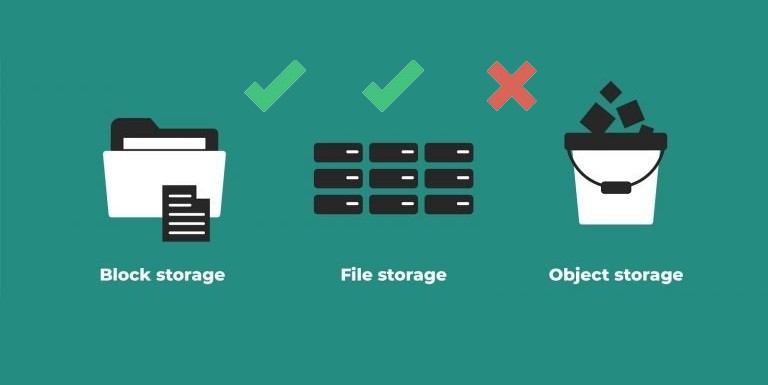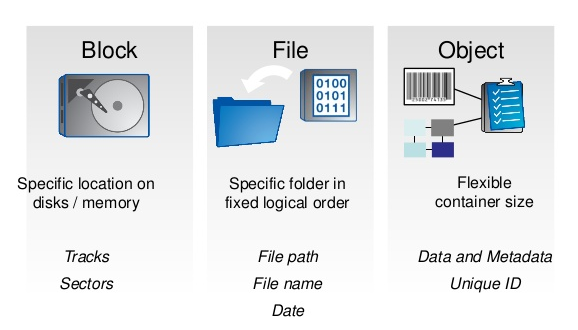
Objects remain protected by storing multiple copies of data over a distributed system if one or more nodes fail, the data can still be made available, in most cases, without the application or the end user ever being impacted. The flat name space organization of the data, in combination with its expandable metadata functionality, facilitate this ease of use.Īnother advantage to object storage its responsiveness to the need for resiliency while mitigating costs. Object-based storage architectures can be scaled out and managed simply by adding additional nodes. Items such as static Web content, data backup, and archives are fantastic use cases. Solving the provisioning management issues presented by the expansion of storage at this scale is where object storage shines. What happens when you try to expand a block-based storage system beyond a hundred terabytes or beyond multiple petabytes? You may run into durability issues, hard limitations with the storage infrastructure that you currently have, or your management overhead may go through the roof. As more and more data is generated, storage systems have to grow at the same pace. Object storage is ideal for solving the increasing problems of data growth.

The tradeoff here is that, unlike object storage, the storage management overhead of block storage (such as remapping volumes) is relatively nonexistent. That can have performance implications.Īnother key difference is that block storage can be directly accessed by the operating system as a mounted drive volume, while object storage cannot do so without significant degradation to performance. Objects have to be manipulated as a whole unit, requiring the entire object to be accessed, updated, then re-written in their entirety. Object storage generally doesn’t provide you with the ability to incrementally edit one part of a file (as block storage does). In the enterprise data center, object storage is used for these same types of storage needs, where the data needs to be highly available and highly durable. Anyone who’s stored a picture on Facebook or a song on Spotify has used object storage even if they don’t know it. Metadata can include anything from the security classification of the file within the object to the importance of the application associated with the information. There is no limit on the type or amount of metadata, which makes object storage powerful and customizable. Instead, entire clumps of data are stored in, yes, an object that contains the data, metadata, and the unique identifier. Object storage, by contrast, doesn’t split files up into raw blocks of data. You’re likely to encounter block storage in the majority of enterprise workloads it has a wide variety of uses (as seen by the rise in popularity of SAN arrays). With block storage, files are split into evenly sized blocks of data, each with its own address but with no additional information (metadata) to provide more context for what that block of data is. How block storage and object storage differ


This way, it’s possible to find the data without having to know the physical location of the data (which could exist within different parts of a data center or different parts of the world). The identifier is a 128-bit unique valuegiven to the object in order for the object to be found over a distributed system. The metadata is defined by whoever creates the object storage it contains contextual information about what the data is, what it should be used for, its confidentiality, or anything else that is relevant to the way in which the data is used. They may be subfiles (a portion of a file), or simply a collection of bits and bytes related to other and not part of any file. Objects also aren’t always directly mappable to files.
Object storage vs file storage manual#
The data can be anything you want to store, from a family photo to a 400,000-page manual for assembling an aircraft. Object storage (also referred to as object-based storage) is a general term that refers to the way in which we organize and work with units of storage, called objects. In this article, we define object storage, compare it to alternatives, and give an overview of where it can make a performance difference for enterprise computing. Ultimately, every IT admin wants to know if object storage is a good fit for certain workloads. In other words, what problems does it solve? What are its drawbacks and limitations? Which types of applications run better, what breaks, and what do you need to completely redesign to take advantage of the storage technology?ĭownload Tip Sheet: 6 SQL Server Backup and Recovery Best Practices Even very technical people scratch their heads over the business value of object storage.


 0 kommentar(er)
0 kommentar(er)
